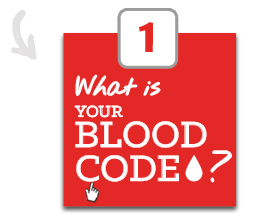Know Your Insulin: Reduce your cancer risk and discover your best metabolism
Richard Maurer, ND, Author of The Blood Code: Unlock the secrets of your metabolism [2014]
https://www.amazon.com/Blood-Code-Unlock-Secrets-Metabolism/dp/0991218108
@drrichardmaurer / TheBloodCode.com
Insulin: What is it?
Insulin is an anabolic hormone—it signals the building and storage of tissue. This hormone primarily responds to your meals, specifically the carbohydrate and protein foods within any meal. If an athlete is eating a low carbohydrate diet and ample protein, insulin is their best friend—stimulating the repair and rebuilding of muscles required for peak performance. But the same insulin can be another’s curse—with a less physically demanding lifestyle, insulin signals to build fat and stimulate the growth of other insulin responsive tissue. Insulin sends the message to build tissue—and like the story of the scorpion and the turtle, it will do as programmed.
What does this have to do with cancer?
There is an indisputable link to heart attack and stroke with high insulin.[i] And there is an equally strong link between elevated fasting insulin and breast cancer,[ii] melanoma,[iii] and colon cancer risk.[iv] This list includes the top five causes of death in the U.S., I am therefore stunned that health-care providers do not run a fasting insulin test routinely, and am further convinced that it’s time for you to get in the driver’s seat of your own health and prevention and know this important health marker.
What does insulin have to do with my blood sugar (glucose)?
When your blood sugar rises; despite the message from insulin—which signals to store it away in the tissues, this is a condition called insulin resistance. At an advanced stage, it is termed type 2 diabetes. But long before a diabetes diagnosis—slight elevation of blood sugar is associated with a 15% increase risk of all cancers.[v]
Insulin Resistance: Who has it?
Nearly fifty percent of Americans are insulin resistant, and many populations carry a higher percentage, such as those from Mexico[vi] and Asia[vii] to name a couple. Your simple task is to look at your blood sugar along with your insulin. Unchecked and unresolved high blood sugar results in substantially higher risk for strokes[viii], heart attacks[ix], dementia[x] and cancer[xi]. Weight gain and type 2 diabetes become almost incidental end-points.
A word of caution, we erroneously think that overweight people have this problem, and while that is correct most of the time, a third of people who develop type 2 diabetes are lean. Therefore, body size, does not profile accurately—blood test results are required to predict insulin resistance.
Fortunately, you can lower insulin.
In a remarkably large study through the US National Institutes of Health, soluble fiber was shown to be more effective in controlling blood glucose, insulin, and insulin-like growth factors, thereby lowering the risk of breast cancer. The researchers went further to state that total fat intake was not a risk factor for cancer.[xii]
In fact, since insulin is stimulated when you eat carbohydrate and protein foods, the only foods you eat that do not raise insulin are fats. This flies in the face of the low fat jargon that has been touted for decades. But the evidence supports this refreshing turn around. For those with high insulin, choosing a lower carbohydrate and substantially higher fat diet restores health.
Does exercise lower insulin?
Well, it depends. The bad news is, sustained aerobic exercise that many people rely upon doesn’t help much at all. The good news is that shorter duration bursts of strenuous activity do a tremendous job of lowering insulin and reversing insulin resistance. Less time is always a good thing, but I will warn you, it is harder. The four principles written in the Blood Code unlock how you can lower your insulin with exercise.
- Exercise on an empty stomach.
- Exercise strenuously and vigorously.
- Engage many muscle groups whenever possible.
- Vary your heart rate throughout.
What is the best insulin range?
Fasting Insulin: The Blood Code reference ranges listed here are based upon current evidence of health and disease risk[xiii] and differ substantially from outdated lab ranges. (S.I. International range is in parentheses)
Low is <3 uIU/mL (<18 pmol/L)
Optimal 3–8 uIU/mL (18-48 pmol/L)
High is >8 uIU/mL (>48 pmol/L)
What’s the next step?
Take an active role in our health and prevention of disease—it really is up to you. Get your insulin measured and get the blood test results in your hands. You can work with your doctor to get these tests done, or you can work with a direct lab—where you pre-pay for the tests and personally receive the results. You can check out this link to a direct lab called ULTA labs for options – https://www.ultalabtests.com/bloodcode
With results in hand, you have important information about what is going on inside you. You can now find the diet and fitness habits that bring you real health—not just for the prevention of disease in the future but for the vitality you deserve today.
Listen to Amy’s story, she discusses insulin and her health: https://thebloodcode.com/_old/portfolio-item/amy/
[i] Lakka, H., et al. Hyperinsulinemia and the risk of cardiovascular death and acute coronary and cerebrovascular events in men. Arch Intern Med. 2000; 160(8):1160–68.
[ii] Gunter, M., et al. Insulin, insulin-like growth factor-I, and risk of breast cancer in postmenopausal women. Natl Cancer Inst. 2009 Jan 7; 101(1):48–60.
[iii] Antoniadis, A. G., et al. Insulin resistance in relation to melanoma risk. Melanoma Res., vol. 21(6). 2011 Dec; 541–46.
[iv] Giovannucci, E. Metabolic syndrome, hyperinsulinemia, and colon cancer: A review. Am J Clin Nutr, vol. 86, no. 3, 2007 Sept; 836–42.
[v] https://www.sciencedaily.com/releases/2014/09/140908204706.htm
[vi] doi:10.2337/diab.39.3.283
[vii] BMJ 1985;291:1081
[viii] doi: 10.1177/1474651408096677
[ix] Nanda, N., et al. Indian J Physiol Pharmacol. 2009 Oct-Dec;53(4):334-40.
[x] doi: 10.2337/db06-0879
[xi] Zhao, X.H., et al. Diabetes, prediabetes and cancer mortality. Diabetologia 2010 Sep;53(9):1867-76.
[xii] Park, Y., et al. High fiber intake linked to reduced breast cancer risk. Am J Clin Nutr. 2009; 90:664–71.
[xiii] Staten, M., et al. Insulin Assay Standardization: Leading to Measures of Insulin Sensitivity and Secretion for Practical Clinical Care. Diabetes Care June 2010 vol. 33 no. 6 e84.




Comments are closed.